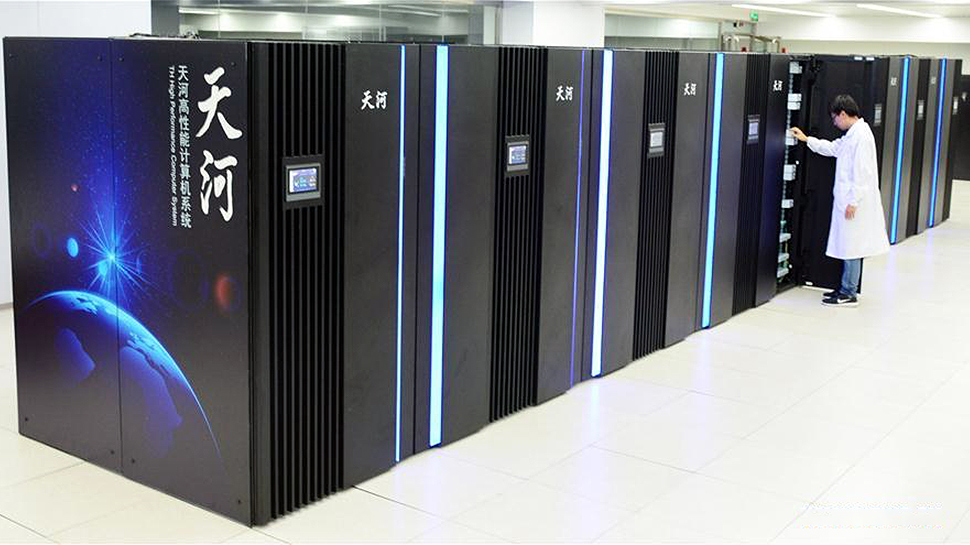China uses mysterious homegrown chips for new Exaflop-class supercomputer — Tianhe Xingyi promises doubled performance over previous record holder
China breaks the ExaFlop barrier with homegrown chips, again.

China has made significant strides in supercomputing in recent years, and the pace seems to be accelerating. The Tianhe-2, developed by China’s National University of Defense Technology, was the world's fastest supercomputer from 2013 to 2015, but it used Intel's Xeon CPUs. Now, the country has announced a new supercomputer that is said to offer twice the performance of its predecessor.
China's supercomputer efforts remain shrouded behind a veil of secrecy, but a recent announcement on newsgd claims the new Tianhe Xingyi system has "doubled in many aspects, including general CPU computing power, network capabilities, storage capabilities, and application service capabilities." This new system matches the general description of the Tianhe-3 supercomputer that was originally planned for release in 2019, touting 1.7 ExaFlops of peak performance from a dual-chip FeiTeng Arm and Matrix accelerator node architecture.
Since Chinese universities can no longer legally obtain American high-performance hardware, they have to use domestic processors, which are apparently becoming quite powerful. The Next Platform reports that the new Tianhe Xingyi can achieve exascale performance using domestic chips called MT3000, but the specifications and performance numbers remain a mystery. In fact, the report does not mention any accelerators, only the processor itself.
China no longer publicly reports its Linpack benchmark results or shares details about its supercomputers, but The Next Platform believes that the latest Tianhe Xingyi can achieve 'exascale computing capability' presumably using the successor of the company's many-core Armv8-based Phytium 2000+ (FTP) processors and the Matrix 2000+ (MTP) accelerators introduced in 2021. If this is the case, this represents a significant step in China's journey towards technological self-reliance.
According to Finance.Sina.com, Tianhe Xingyi supports various high-performance computing applications, AI model training, and big data analysis to meet supercomputing needs in various industries.
Given that China no longer discloses the performance of its supercomputer and does not participate in the Top 500 list of highest-performance supercomputers, we can only wonder how fast Tianhe Xingyi is. The country has turned to Gordon Bell prize submissions for its latest supercomputers instead of using the industry standard Top500 to reduce Western visibility into its supercomputing efforts. As such, it wouldn't be surprising to see research conducted on this machine submitted for the prize next year.
Get Tom's Hardware's best news and in-depth reviews, straight to your inbox.

Anton Shilov is a contributing writer at Tom’s Hardware. Over the past couple of decades, he has covered everything from CPUs and GPUs to supercomputers and from modern process technologies and latest fab tools to high-tech industry trends.